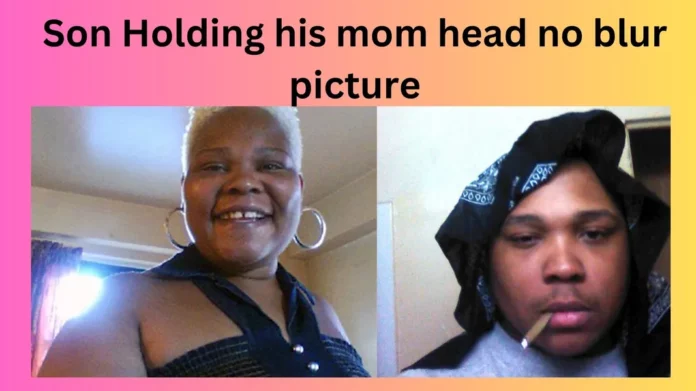In the age of digital connectivity and social media, the power of the internet to disseminate information, both good and bad, is undeniable. One of the most remarkable aspects of this digital age is how it has revolutionized the way we share and consume news, entertainment, and even tragedies.
Today, we delve into a disturbing incident that unfolded through the lens of social media: the shocking case of “Son Holding His Mom’s Head No Blur Picture.” This macabre event not only showcases the extent to which social media can amplify a story but also raises important questions about the ethics and consequences of such widespread dissemination.
The Chilling Keywords: Son Holding His Mom Head No Blur Picture
It all began with a set of chilling keywords that, when searched on social media platforms, would lead users down a dark and disturbing rabbit hole. “Son Holding His Mom Head No Blur Picture” is not the kind of phrase one expects to encounter online, and yet, it became a trending topic, capturing the attention of millions. The phrase was like a siren’s call, drawing curious onlookers and well-intentioned individuals alike into a story that would soon grip the collective consciousness of the internet.
The Macabre Incident: Tanya Byrd’s Tragic Fate
At the center of this haunting narrative was Tanya Byrd, a 45-year-old mother from New York City. On a fateful night in March 2013, Tanya’s life was brutally and tragically cut short. The details of her murder were gruesome and horrifying, involving her own son, Bahsid McLean, who was just 23 years old at the time.
Bahsid McLean’s actions were beyond comprehension. In a fit of rage and madness, he not only murdered his mother but also dismembered her body, subsequently taking photographs of himself holding her severed head. These gruesome images would go on to shock the world when they surfaced on various social media platforms.
Social Media Eruption: The Viral Resurgence
The power of social media to amplify and disseminate information cannot be underestimated. Within hours of the photographs being uploaded online, they went viral, spreading like wildfire across various platforms, including Twitter, Facebook, and Instagram. The images were not only horrifying but also presented a disturbing challenge to social media platforms and content moderation policies.
The internet was divided into two camps. On one side, there were those who argued that sharing such graphic and disturbing content was necessary to raise awareness about the heinous crime and to ensure justice was served. On the other side, there were those who believed that the widespread dissemination of these images was unethical and deeply disrespectful to the victim and her family.
Tanya Byrd’s family, in particular, was thrust into the spotlight, with their grief being laid bare for the world to see. They were faced with the unimaginable task of dealing with the loss of their loved one while also contending with the constant barrage of media attention and internet speculation.
The debate over the ethics of sharing such horrific content on social media platforms was further compounded by the role of news organizations. Some argued that news outlets had a responsibility to report on the story, while others criticized them for sensationalizing the tragedy and contributing to the viral nature of the photographs.
The Courtroom Drama: A Trial Like No Other
As the world watched in shock and horror, Bahsid McLean was arrested and charged with the murder of his mother. The subsequent trial was like no other, as it played out in the shadow of the social media storm that had erupted around the case.
The defense argued that McLean was mentally ill at the time of the murder and should be found not guilty by reason of insanity. The prosecution, on the other hand, sought to prove that McLean was fully aware of his actions and should be held criminally responsible.
Throughout the trial, social media continued to play a significant role. Legal experts and armchair analysts alike took to the internet to dissect the case, offering their opinions on everything from the state of McLean’s mental health to the quality of the evidence presented in court.
The widespread public interest in the trial also raised questions about the potential impact of social media on the judicial process. Could the intense scrutiny and commentary from millions of online users influence the outcome of the trial? Could it taint the jury pool or affect the judge’s decisions?
Conclusion
The case of “Son Holding His Mom’s Head No Blur Picture” is a chilling reminder of the power of social media to shape public discourse and perception. It serves as a cautionary tale about the ethical responsibilities of individuals and media organizations when sharing sensitive and graphic content online. While social media can be a force for good, enabling the rapid spread of information and awareness, it can also be a double-edged sword, sensationalizing tragedy and invading the privacy of grieving families.
As we reflect on this disturbing case, we must consider the ethical implications of our actions on social media and the responsibilities of the platforms themselves. In the age of viral trends and instant information sharing, it is essential that we balance the pursuit of truth and justice with compassion and respect for the victims and their families. Only then can we hope to harness the true power of social media for positive change in our interconnected world.















